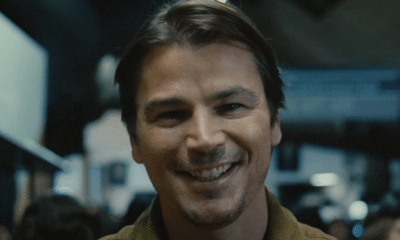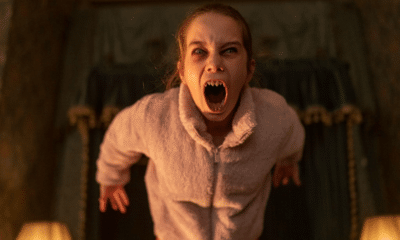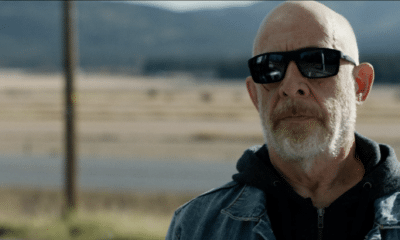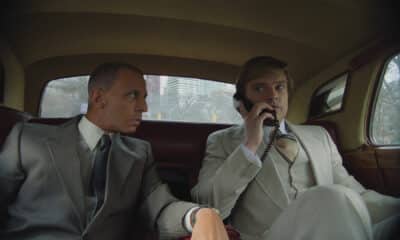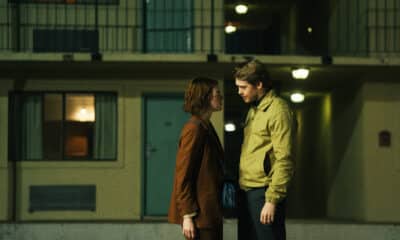Shooting the Mafia Review: A fascinating but muted portrayal of an extraordinary woman whose hauntingly beautiful images are synonymous with Sicily’s brutal history with the Cosa Nostra.
 Multi award-winning documentarian Kim Longinotto is a proponent of documenting women who challenge the status quo in patriarchal societies. From genital mutilation in Kenya (The Day I will Never Forget) to women in India standing up to rapists (Pink Sari’s) and more recently, the life and work of an ex-prostitute who rescues young girls from the streets of Chicago (Dreamcatcher), Longinotto’s keen eye for socially conscious and oft times, politically charged films highlight the power of ordinary women who do extraordinary things.
Multi award-winning documentarian Kim Longinotto is a proponent of documenting women who challenge the status quo in patriarchal societies. From genital mutilation in Kenya (The Day I will Never Forget) to women in India standing up to rapists (Pink Sari’s) and more recently, the life and work of an ex-prostitute who rescues young girls from the streets of Chicago (Dreamcatcher), Longinotto’s keen eye for socially conscious and oft times, politically charged films highlight the power of ordinary women who do extraordinary things.
This time, Longinotto turns her camera to Letizia Battaglia; an 84-year-old, chain-smoking trailblazer who was the first female newspaper photojournalist in Italy. What makes her story so fascinating is the fact that Letizia defied male authority and society’s culture in her home town of Palermo, Sicily, to visually document the bloody, graphic and horrific crimes of the Mafia in a time when their unrivaled power went relatively unchallenged.
Interspersed with archival footage, home movies, personal photographs, snippets of classic Italian films, spot tv interviews and interviews with Battaglia and some of her ex-lovers, an alluringly intelligent yet evasive woman with a colourful personal and professional life is slowly revealed. She grew up in a strict, patriarchal home with “that awful man in the shadows” until she met her husband by chance on the street at 16 and ran away with him and got married. In contrast to home videos of a seemingly happy life, Battaglia is frank about not knowing herself, the violence she experienced at the end of her marriage and her struggles with mental illness.
Following her divorce in 1971, Battaglia first took up journalism until she realised she could better sell her articles when they were accompanied by images. Photography moved her in such a way that she could feel it, understand it and express herself in a way no other medium could – “I was saved by photography” she states to the camera.
Returning to Palermo in 1974, Battaglia began working at left-wing newspaper L’Ora where she took nearly 600,000 images of the territory until it folded in 1990. Three days into her photo job, she saw and captured her first murder – a confronting image of a man shot and left for days outside under an olive tree. In the ensuing decades, Battaglia went on to shoot some of the most iconic images that have come to represent Sicilian history and the Mafia around the world. At its most ferocious, it wasn’t unusual for Battaglia to attend four or five Mafia crime scenes a day. She attended crime scenes so often she felt like a roving morgue with “an archive of blood”.
Battaglia often thought and dreamt of burning her images of the Mafia and the dead until she realised the importance of documenting her community’s narrative in a time when they were forced into silence by the Cosa Nostra. “You can never be happy again when you lived through that horror” she reflects.
And thank god she didn’t because her images are so hauntingly poetic that you can’t help but see the beauty and grace within their horrific frames. Longinotto highlight’s this in one beautiful moment in the film where she cuts between colour archival footage at a crime scene with Battaglia’s black and white still of the victims. It’s an extraordinary moment – seeing the contrast between a grisly, cold crime scene where people just walk around like the victims are nothing and Battaglia’s incredible skill in capturing a moment with such emotion and deathly beauty.
The film begins to lose its trajectory in the final third when it moves towards the 80s and 90s when Battaglia stopped taking photographs due to her entry into politics. A volatile time when the Mafia moved on from killing each other to killing the establishment, Longinotto turns to the headline-making Mafia trials and the bombing assassinations of anti-mafia judges Giovanni Falcone and Paolo Borsellino. It’s certainly fascinating but feels a little disjointed from the rest of the film.
While it would have been nice to have Battaglia discuss her portfolio of work in more depth, Shooting the Mafia is still a compelling tale worth watching. It’s just a shame that someone so colourful, is mutedly portrayed in tones of grey. But perhaps that is exactly how Battaglia wanted herself to be seen.
Shooting the Mafia was reviewed at the Sydney Film Festival by Sacha Hall, June 2019.
Apart from being the worst and most unfollowed tweeter on Twitter, Sacha loves all things film and music. With a passion for unearthing the hidden gems on the Festival trail from London and New York to her home in the land Down Under, Sacha’s favourite films include One Flew Over The Cuckoo Nest, Monty Python and the Holy Grail, Fight Club, Autism in Love and Theeb. You can also make her feel better by following her @TheSachaHall.

Latest Posts
-


Film Trailers
/ 1 day agoM. Night Shyamalan’s ‘Trap’ trailer lands
Anew experience in the world of M. Night Shyamalan.
By Paul Heath -


Film News
/ 2 days agoFirst ‘Transformers One’ teaser trailer debuts IN SPACE!
The animated feature film is heading to cinemas this September.
By Paul Heath -


Film Reviews
/ 2 days ago‘Abigail’ review: Dirs. Matt Bettinelli-Olpin & Tyler Gillett (2024)
Matt Bettinelli-Olpin and Tyler Gillett direct this new horror/ heist hybrid.
By Awais Irfan -


Film Trailers
/ 2 days agoNew trailer for J.K. Simmons-led ‘You Can’t Run Forever’
A trailer has dropped for You Can’t Run Forever, a new thriller led by...
By Paul Heath
